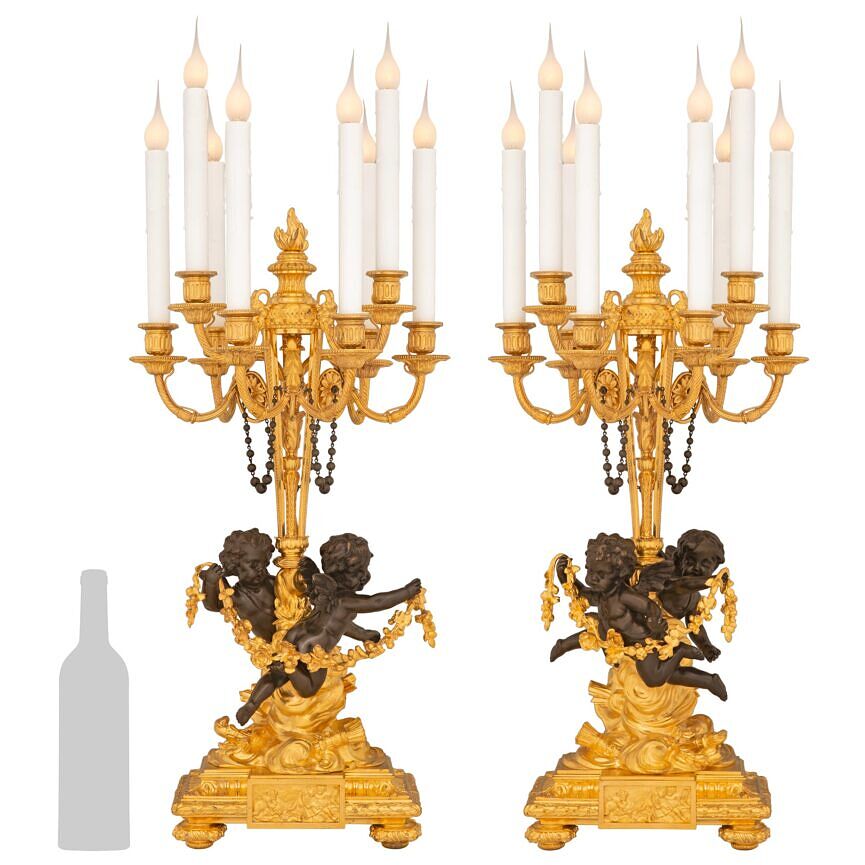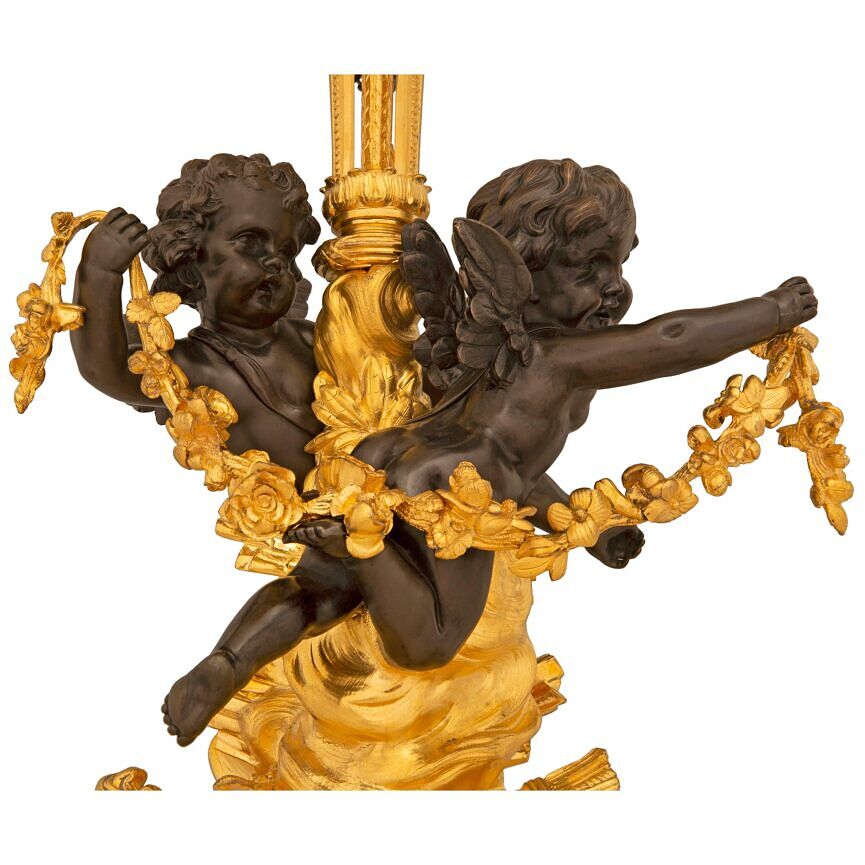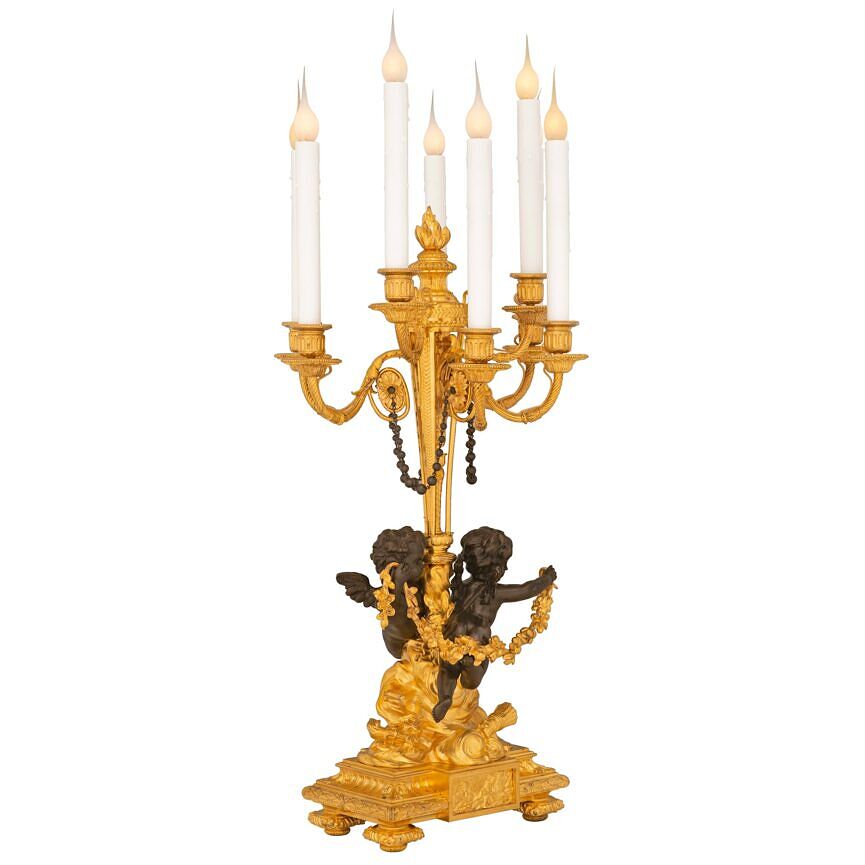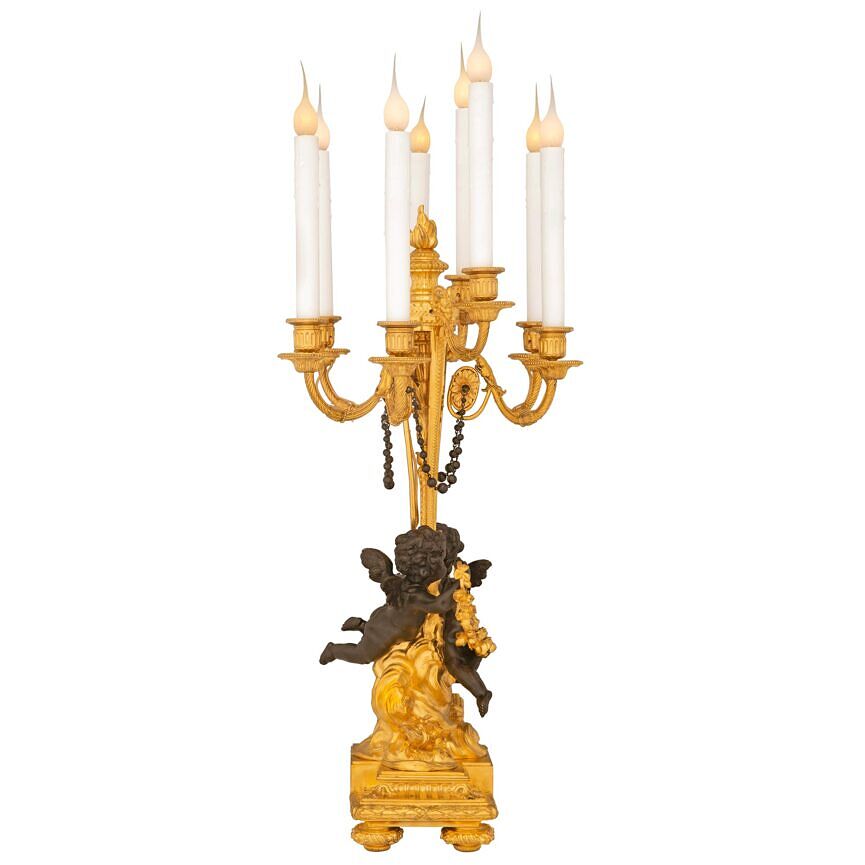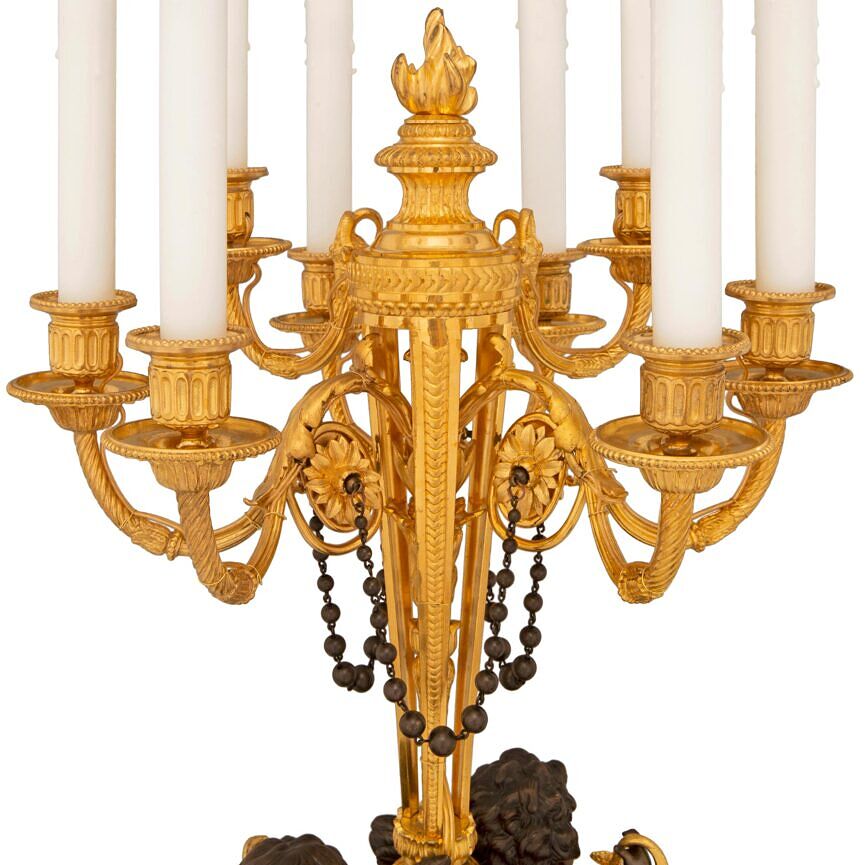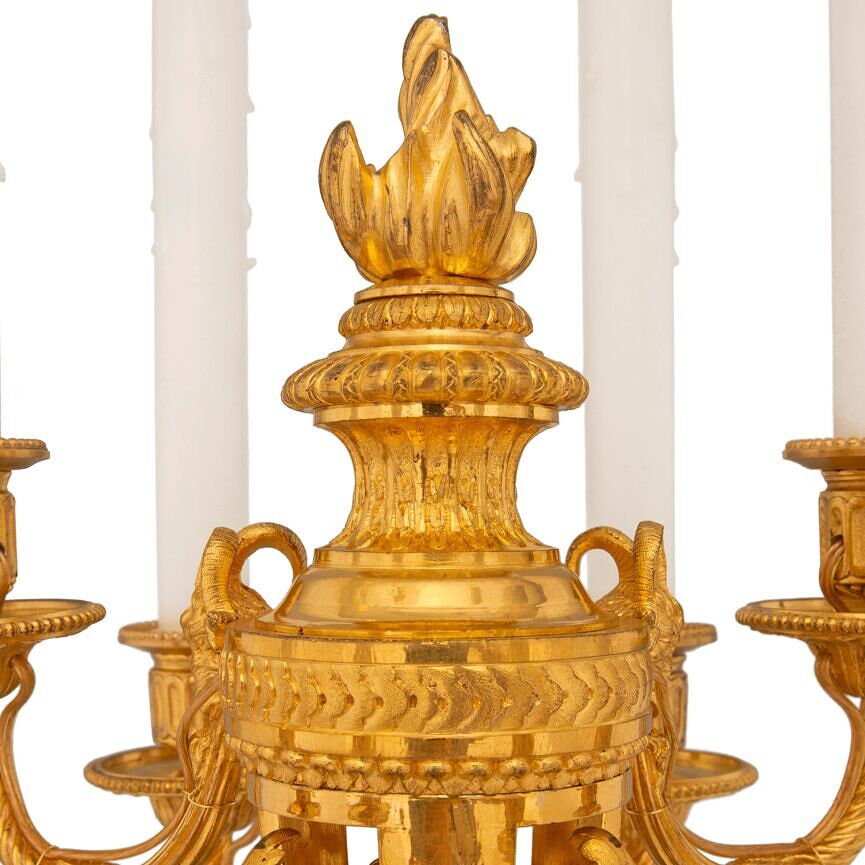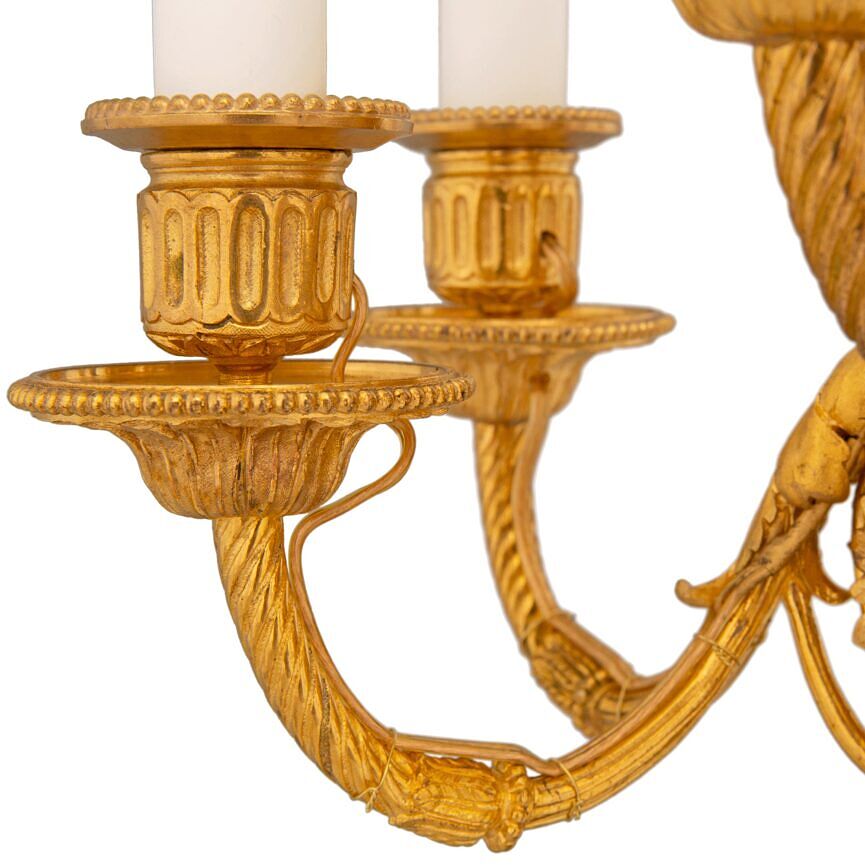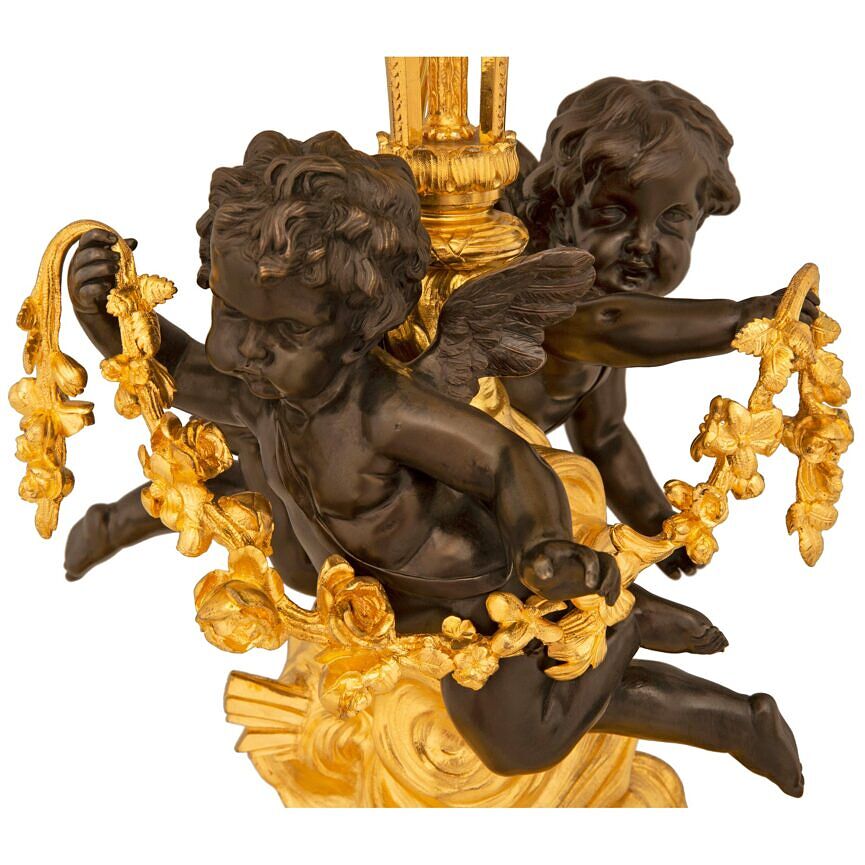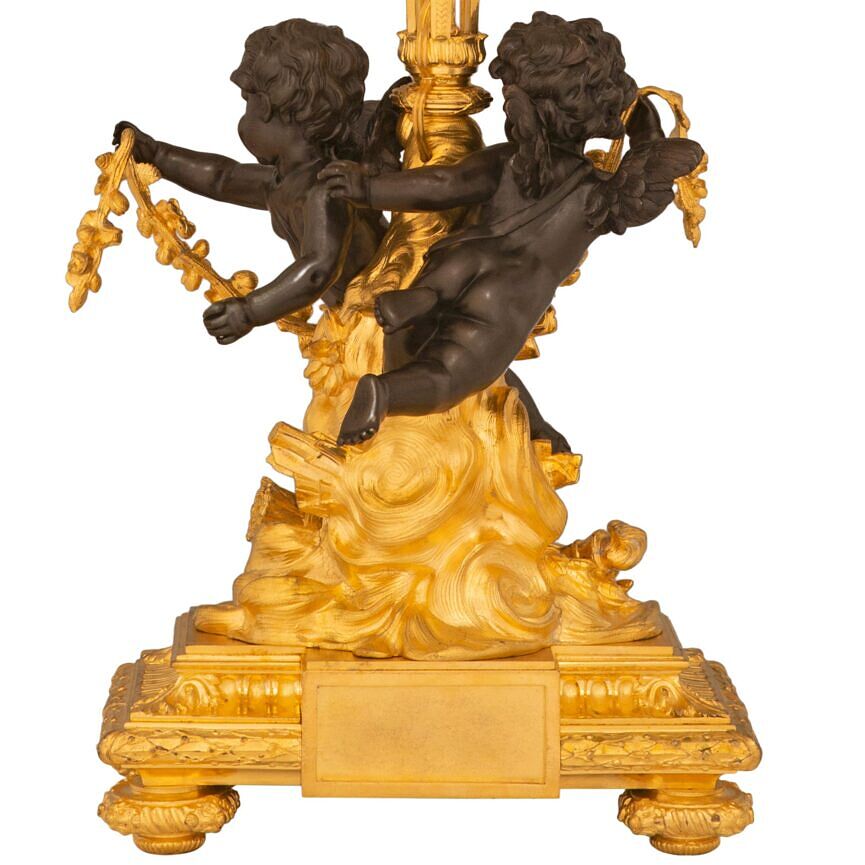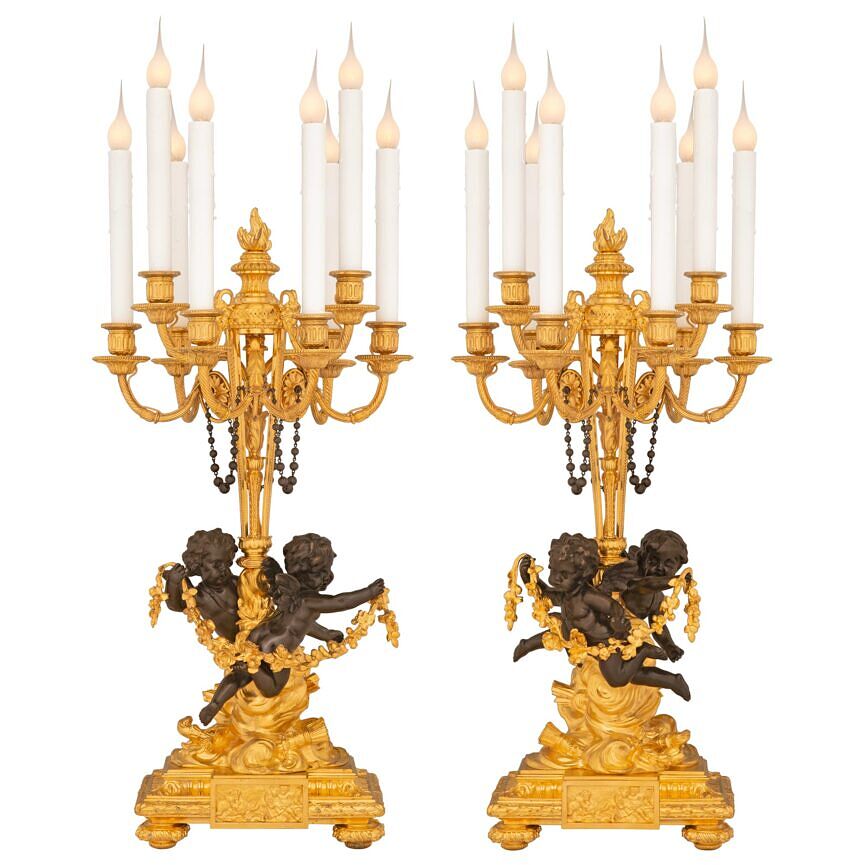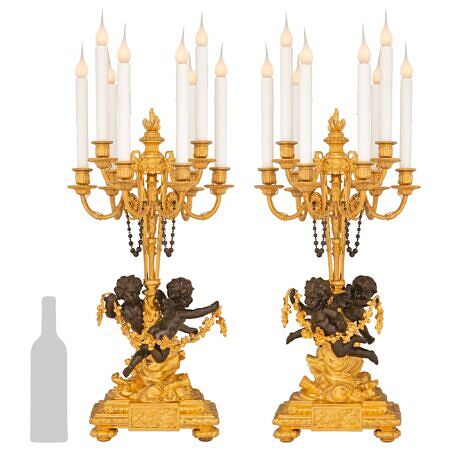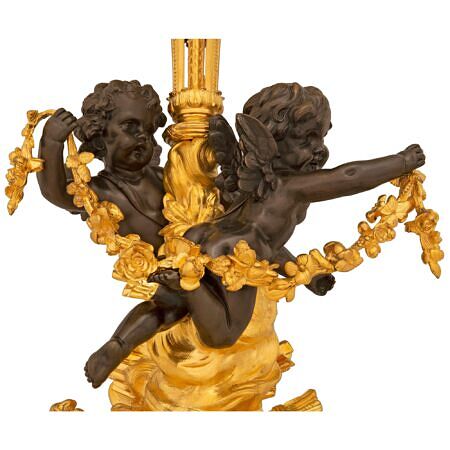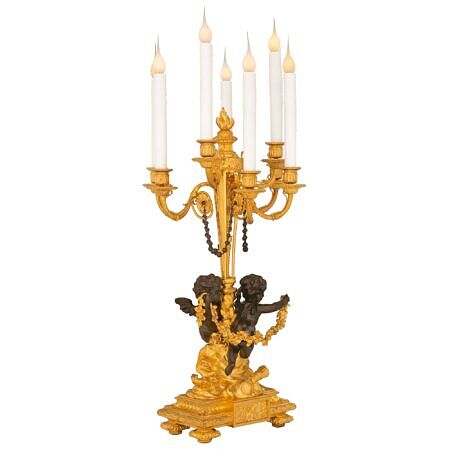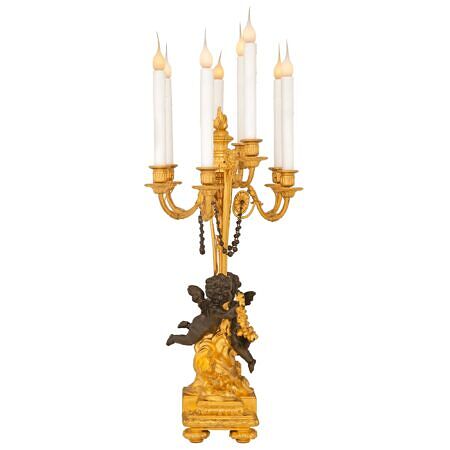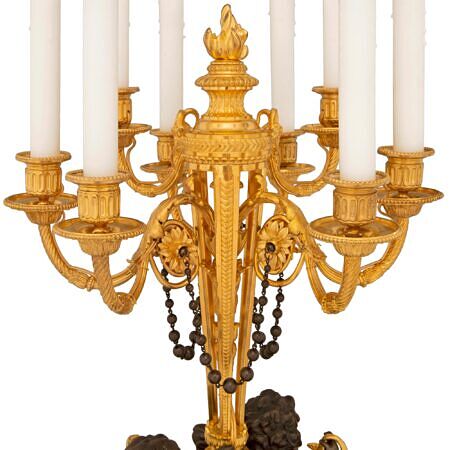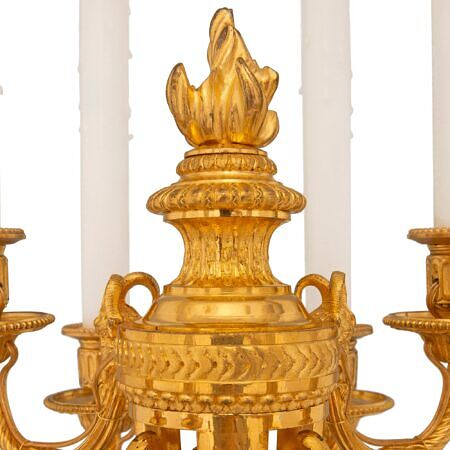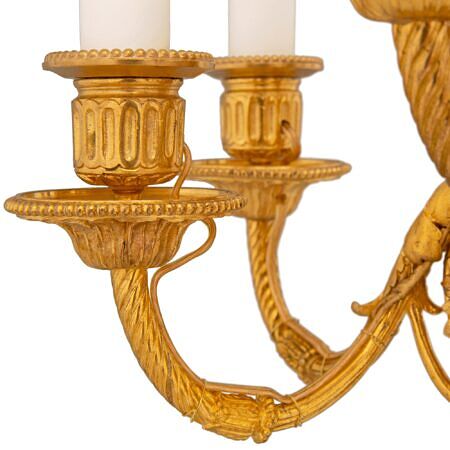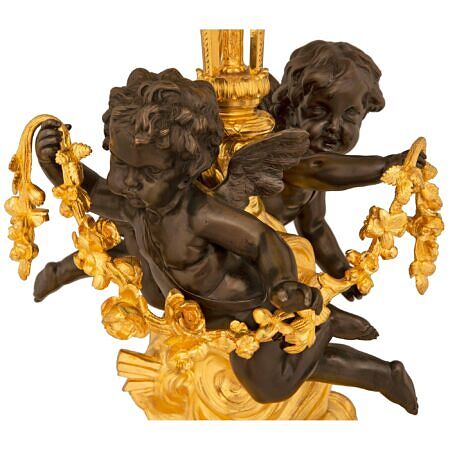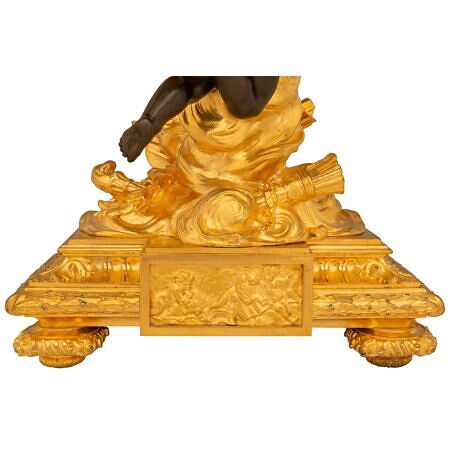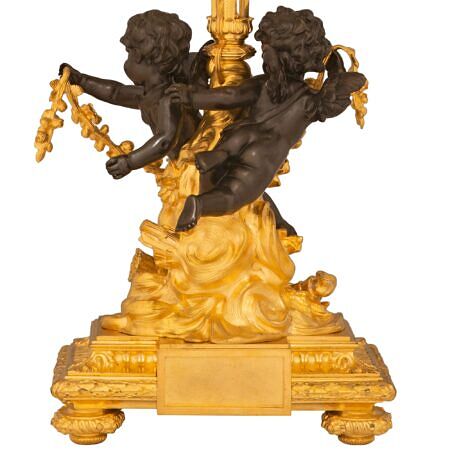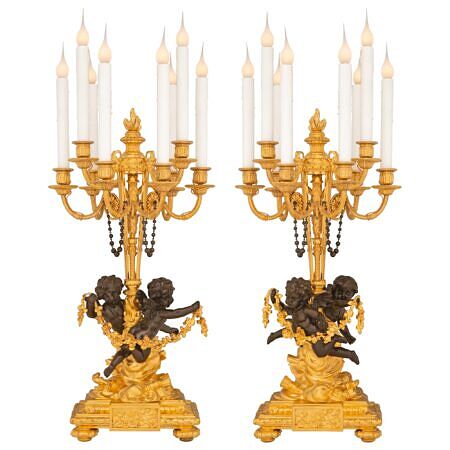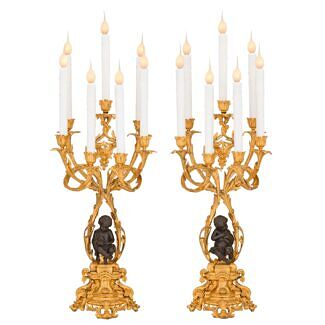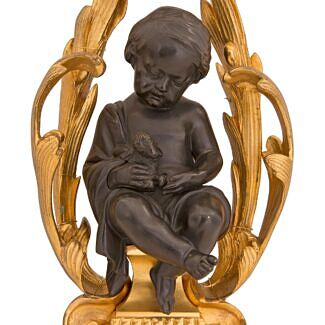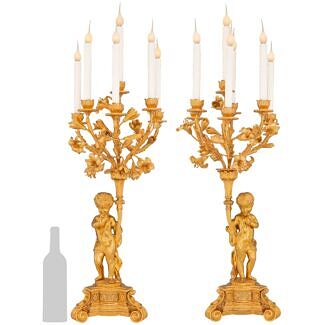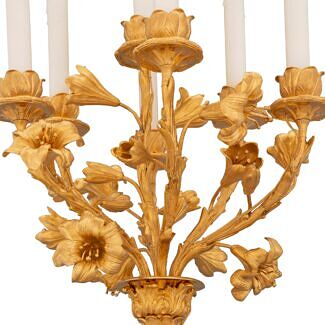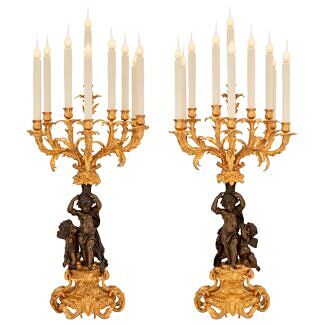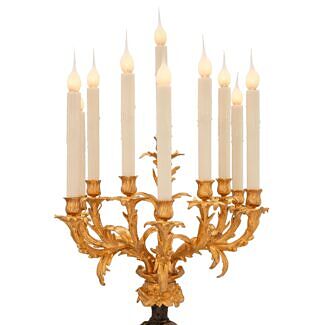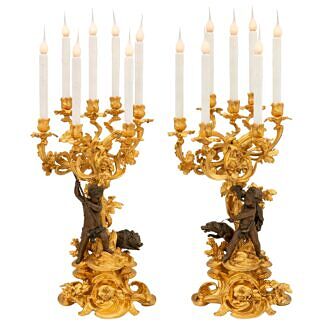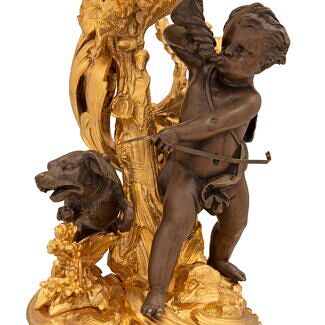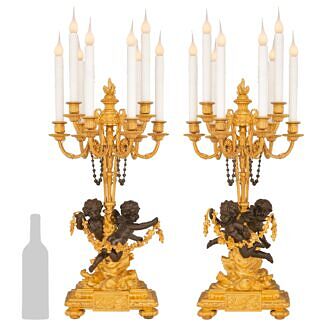A true pair of French 19th century Louis XVI st. Belle Époque period patinated bronze and ormolu candelabra lamps possibly by Henri Picard
A stunning and extremely high quality true pair of French 19th century Louis XVI st. Belle Époque period patinated bronze and ormolu candelabra lamps possibly by Henri Picard. Each eight arm lamp is raised by fine mottled foliate feet below... — Read More
A stunning and extremely high quality true pair of French 19th century Louis XVI st. Belle Époque period patinated bronze and ormolu candelabra lamps possibly by Henri Picard. Each eight arm lamp is raised by fine mottled foliate feet below a beautiful wrap around berried laurel band, lovely curved fluted designs in a superb satin and burnished finish, and a striking central plaque depicting charming cherubs playing amidst clouds. At the center are two exquisite patinated bronze winged cherubs holding a most elegant richly chased blooming flower garland seemingly flying amidst wonderful cloud like designs with a quiver and the eternal flame. The pierced tapered central support displays a fine overlapping pattern centering an exquisite foliate reserve from where the arms branch out. Each elegantly curved arm displays a beautiful spiral fluted design leading to lovely foliate beaded bobeches, fluted beaded candle cups and adorned with most decorative swaging beaded patinated bronze ball garlands. At the center are three richly chased rams heads below a most decorative lightly curved reserve with reeded foliate designs and an impressive eternal flame finial. All original gilding throughout.
Henri Picard (1831-1890) was a renowned 19th century French Bronzier, and founded The Maison Picard Paris, in 1831. The firm was active until circa 1890. Picard’s works are known for high quality chasing and magnificent mercury gilding. Picard was commissioned by Emperor Napoleon III for decorative items for his apartments in the Royal and Imperial Château Fontainebleau, which are now on exhibit in the Louvre. As well, an important pair of twelve-light candelabras, that remain in the Musée du Louvre today. Henri Picard is highly regarded by antique experts and collectors alike. — Read Less
All light fixtures have been inspected and rewired to US standards.
- Item # 13344
-
H: 33 in L: 14.5 in D: 13.5 in
H: 84 cm L: 37 cm D: 34 cm
- France
- 19th Century
- Ormolu, Patinated Bronze
-
Belle Époque Period Read More,
Louis XVI st. Read More
(Belle Époque Period) -
Gaining its name from the optimistic and peaceful period of time between 1871 and World War I, Belle Epoque means “beautiful period”, and occurred during the era of the Third French Republic. This period of economic, colonial, and scientific prosperity brought with it a flourishing artistic climate with numerous literal, musical, theatrical, and visual masterpieces being created.
The Eiffel Tower, which was constructed between 1887 and 1889, served as the entrance to the World’s Fair held in Paris. That same year, the Moulin Rouge cabaret in Paris was founded and showcased the now more mainstream styles of performance including can-can dancing. Belle Epoque dancers and singers were Paris celebrities and became immortalized by the poster arts of Toulouse-Lautrec.
Leading up to this period in 1865, the American Civil War was coming to a close, with France proposing to construct the Statue of Liberty as a joint effort with the United States. France would be responsible for the statue, with America constructing the pedestal. Created to celebrate the nation’s success in building a viable democracy, the statue would stand as a symbol of friendship between the French and American people.
(Louis XVI st.) -
Also known as Louis Seize, Louis XVI's style is a style of architecture, furniture, decoration, and art created during Louis XVI’s 19-year reign in France, just before the French Revolution.
Thought to be a reaction and juxtaposition to the prior more elaborate styles, Louis XVI style developed at the end of the Baroque Period and continued until the birth of French Neoclassicism.
King Louis XVI showed little enthusiasm for the old world styles of the Baroque Period and he sought out a create a new “beau ideal” that focused on the purity and grandeur of Ancient Romans and Greeks.
Inspired by Ancient Roman architecture and art, distinct features of the Louis XVI style are linear lines, small repeated motifs, floral medallions hanging from ribbons, acanthus leaves, urns, dolphins, ram, and lion heads, and griffins.
Greco-Roman elements, often used in earlier and later French styles, were also quick common and included fluted and twisted columns, Caryathids, and corbels.
- Henri Picard Read More
Henri Picard (1831-1890) was a renowned 19th century French Bronzier, and founded The Maison Picard Paris, in 1831. The firm was active until circa 1890. Picard's works are known for high quality chasing and magnificent mercury gilding. Picard was commissioned by Emperor Napoleon III for decorative items for his apartments in the Royal and Imperial Château Fontainebleau, which are now on exhibit in the Louvre. As well, an important pair of twelve-light candelabras, that remain in the Musée du Louvre today. Henri Picard is highly regarded by antique experts and collectors alike.
Payment Plan Option Learn More Choose the payment plan option at checkout and customize this payment option with our team. Payment plans are flexible and items will ship once all payments are received.


